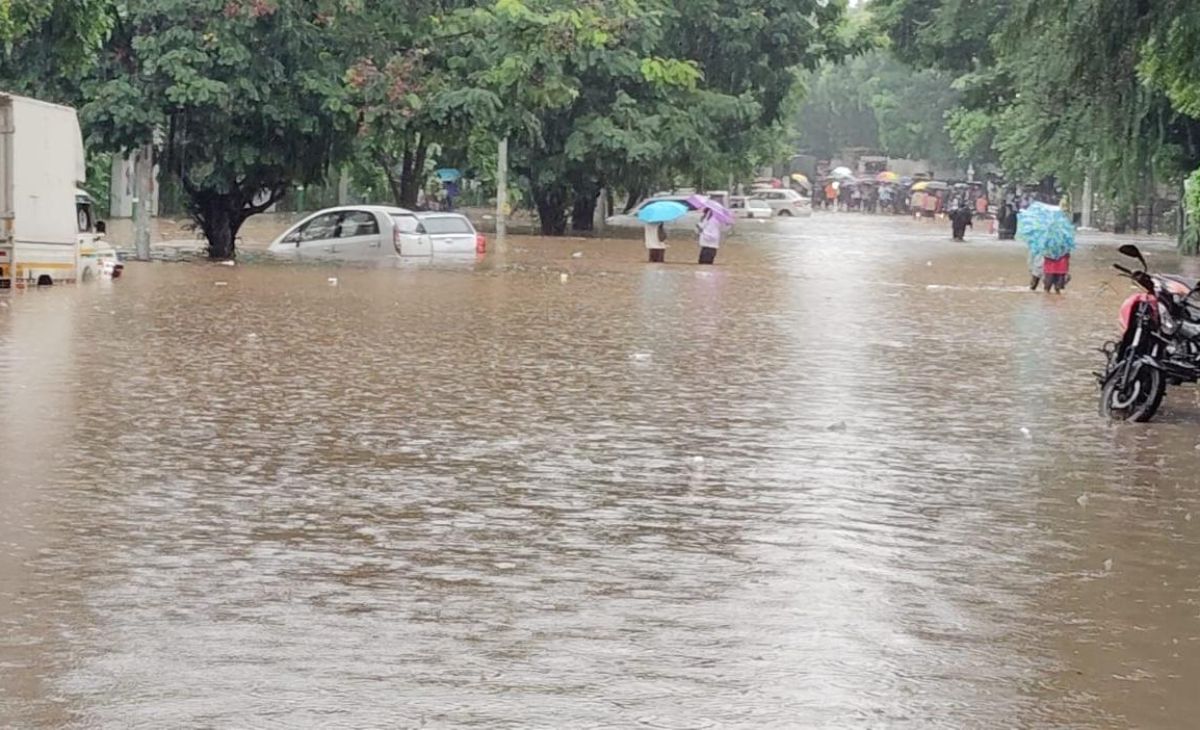The political landscape in West Bengal is once again marked by heightened tension and unrest, with the Bharatiya Janata Party (BJP) announcing a 12-hour statewide strike in response to a violent clash with the police during a protest march to the state secretariat, Nabanna. The protest was fueled by public outrage over the rape and murder of a 31-year-old doctor in Kolkata’s RG Kar Medical College and Hospital. The situation has escalated into a broader political confrontation between the BJP and the ruling Trinamool Congress, with both sides accusing each other of inciting violence and unrest.
In a state known for its vibrant political activity, West Bengal has once again become the epicenter of a significant political storm. The Bharatiya Janata Party (BJP) has called for a 12-hour statewide bandh (strike) on the 12th to protest the alleged police brutality during a march towards the state secretariat, Nabanna. This march was organized to demand justice for the brutal rape and murder of a 31-year-old doctor at Kolkata’s RG Kar Medical College and Hospital.
The Inciting Incident: A Tragic Crime
The rape and murder of the young doctor have shaken Kolkata to its core. The horrific crime has not only sparked outrage but also reignited the debate over women’s safety in the state. The BJP, seizing on the public sentiment, organized a protest march towards Nabanna, the seat of the state government, demanding swift justice for the victim.
Protest and Police Action: A Day of Chaos
The protest, which began at College Square, quickly escalated into a confrontation with the police. Visuals from the day show chaotic scenes as protesters clashed with law enforcement. Despite the lack of permission for the march, thousands took to the streets, leading to the deployment of 6,000 police personnel, drones, and riot control measures such as water cannons and teargas.
The police, anticipating violence, had turned Nabanna into a fortress, with barricades welded to the ground and heavily greased to prevent scaling. As the marchers attempted to push through, the situation deteriorated, with stones being hurled at the police and batons being used in response.
Political Accusations and Conspiracy Theories
The ruling Trinamool Congress (TMC) has accused the BJP of using the protest as a pretext to incite violence and create instability in the state. TMC leaders have alleged that the protest was part of a larger conspiracy to destabilize the government, with some going as far as to claim that the BJP was hoping for a repeat of the Nandigram incident, where political violence led to multiple deaths and turned the political tide.
To support their claims, TMC leaders released videos, allegedly showing BJP-affiliated individuals discussing the need for casualties to gain political advantage. While the authenticity of these videos has not been verified, they have added fuel to the fire of political rhetoric.
The Missing Activists: A Controversial Arrest
Adding to the tension is the disappearance of four student activists involved in the protest. According to BJP Leader of the Opposition Suvendu Adhikari, these activists went missing after midnight while distributing food to protest volunteers. The Bengal police later confirmed their arrest, stating that they were involved in a conspiracy to incite large-scale violence during the march. This has led to further accusations from the BJP, claiming that the state police are acting as an extension of the ruling party, suppressing dissent and democratic protest.
Strike Call: A Political Gambit
In response to the day’s events, the BJP has called for a 12-hour statewide strike, a move that the TMC has condemned as politically motivated. Trinamool leaders have emphasized that Bengal has not seen a bandh in years and accused the BJP of trying to gain political ground by disrupting daily life.
The effectiveness of the strike remains to be seen, but the political narrative is clear: both the BJP and the TMC are using the incident to galvanize their bases and shape public perception. For the BJP, the bandh is a way to project itself as the champion of justice and law and order, while the TMC is positioning itself as the guardian of peace and stability in the face of what it calls “vulture politics.”
Numerical Analysis: Impact of Strikes in West Bengal
Historically, bandhs in West Bengal have had a mixed impact. Economic losses due to strikes have been significant, with estimates ranging from ₹200 to ₹500 crore per day depending on the extent of participation and the sectors affected. In the past, strikes have often paralyzed public transportation, halted commerce, and disrupted daily life, but their political effectiveness in influencing public opinion and electoral outcomes has varied.
According to a 2019 study by the Indian Statistical Institute, repeated strikes and political agitations in West Bengal led to a 1.5% reduction in the state’s GDP over two decades. With the state’s economy already under strain, another bandh could exacerbate economic challenges, particularly for daily wage workers and small businesses.
Conclusion: The Road Ahead
As West Bengal braces for the upcoming bandh, the state finds itself at a crossroads. The fallout from this protest and the ensuing strike will likely have lasting implications, not only for the state’s political climate but also for the broader debate on women’s safety, law and order, and the role of protests in a democracy.
Disclaimer: The views expressed in this blog post are based on publicly available information and the opinions of political leaders involved. The content is intended to provide an analysis of the events and does not claim to have verified the authenticity of the allegations or the videos mentioned. Readers are encouraged to seek out additional sources and form their own opinions.
This comprehensive analysis underscores the complexity of the situation in West Bengal, where a tragic crime has spiraled into a significant political confrontation. The events of the next few days will be crucial in determining the future trajectory of this conflict.




